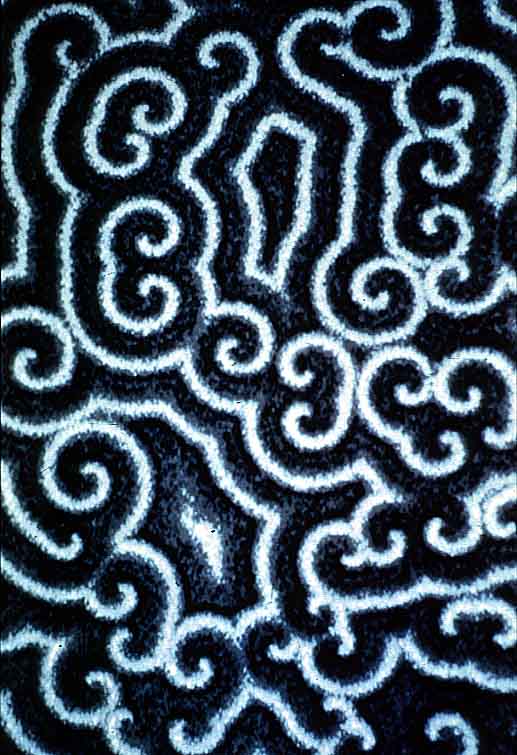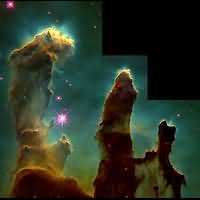Remote Ready Biology Learning Activities has 50 remote-ready activities, which work for either your classroom or remote teaching.
Serendip is an independent site partnering with faculty at multiple colleges and universities around the world. Happy exploring!

| 
| Exploring Emergence |
 |
 |
|
How come geese fly in organized V-shaped flocks, and fish swim in schools? Is there a leader? Maybe the one in front? What's responsible for the layout and development of a city over time? The mayor? It's interesting that most people think of social organization in terms of a director, someone (or some thing) that is different from other participants in a group, who has in mind what the group is supposed to be doing, and who tells other participants what they should be doing to achieve the overall organization.
Is it possible that there could be social organization without a director? Could a group of individuals, all of whom are the same, achieve sophisticated social organization solely through their own interactions? Could the behavior of such societies change over time even if the individuals didn't themselves change? Deborah Gordon, a biologist at Stanford University, has posed and answered many of these questions in an extended series of studies on ant colonies. This exhibit explores them through a series of computer models motivated by her work.
|

Section 1: Organization and Interactions Part 2: Looking for a director Part 3: Looking instead at interactions Part 4: Interactions and dynamic equilibria Part 2: Response to intruders Section 3: Conclusions and Models Complete Model and Model Details |
|
Organization and Interactions: Part 1 Part 2 Part 3 Part 4 Changing Group Behavior: Part 1 Part 2 Conclusions and Extensions Complete Model and Model Details |
Exhibit by Laura Cyckowski and Paul Grobstein, in association with the Serendip/SciSoc Group, Summer 2006.
Applets created by Laura Cyckowski, using NetLogo, the availability of which is gratefully acknowledged.
| Forum
| Complex Systems | Serendip Home |